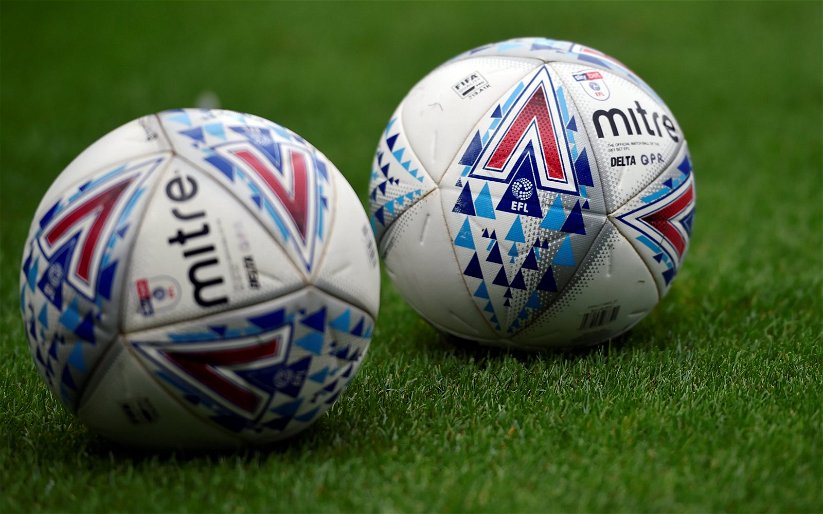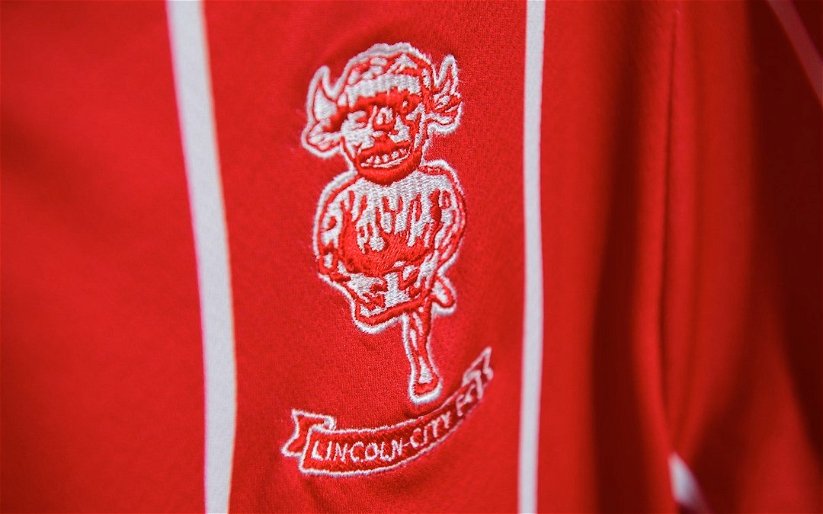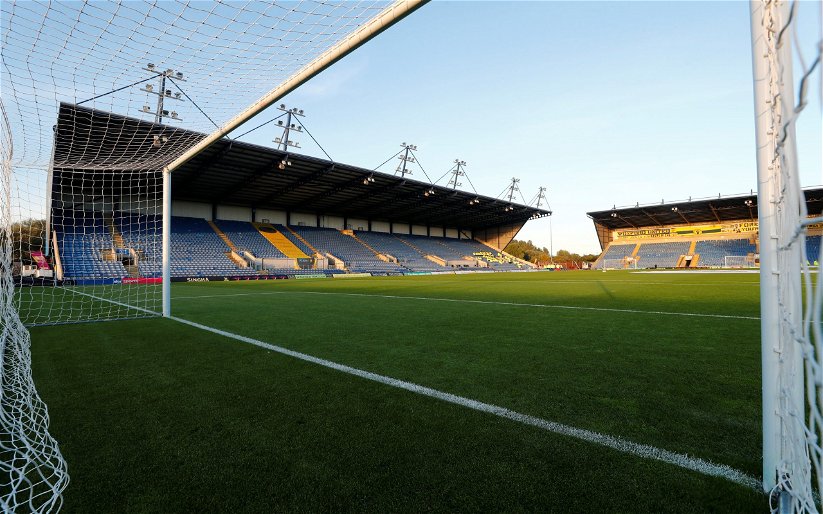8. What is 61231? – The largest attendance ever at any game featuring Lincoln City – at Goodison Park, Everton on 16 April 1954.
Time for the answers; you pretty much got them all this week.
1. Which Football League record has been held by Lincoln City for 114 years?
Fewest goals conceded at home in a season – City conceded just 4 (in 17 games) in the 1901-02 season. Unfortunately their away record was not so great and they finished 5th in the Second Division, missing promotion by 10 points. It is their highest ever final league position, although they finished just 6 points short of promotion in 1955-56 when finishing 8th.
2. Which City striker scored a hat-trick at Arboretum Field?
Frank Smallman, in City’s 6-0 Midland League win over Derby Junction on 19 April 1890.
Derby Junction was a short-lived club that came into existence in 1885 and briefly became the city’s second club. Their moment in the sun came in 1887-88 season, when they reached the semi-finals of the FA Cup by beating the mighty Blackburn Rovers team 2-1 at Arboretum Field in the quarter-final on 28 January 1888. They were beaten 3-0 by eventual cup-winners West Bromwich Albion in the semi-final on 18 February 1888, and their star quickly faded after that. The onset of professionalism in the game saw them decline further until they folded completely in 1895. The site of Arboretum Field is where the public football pitches now stand, adjacent to the Arboretum itself.
3. …and how did Geoff Marlow come to score a hat-trick on a rugby ground?
In the 1944-45 season, Hull City’s Anlaby Road ground had been bombed and notice to quit was served on the club in 1943. They were forced to move to The Boulevard, then home of Hull RLFC, for the 1944-45 season before going into a year’s hiatus until the new Boothferry Park was ready in 1946. Marlow scored his hat-trick at The Boulevard on 24 March 1945 as City won 4-1 in the War League.
Hull’s relationship with Anlaby Road is very longstanding. The original ground was opened in 1906, and had a record attendance of 32,930 in 1930; it was demolished just after the war to make way for a new railway line. Boothferry Park was also on Anlaby Road, a few hundred yards away from their original ground, and had a record attendance of 55,019 in 1949. Lincoln were the first team to play there, a 0-0 draw in front of 25,586 on the opening day of the 1946-47 season. It was used until 2002 when the new KC Stadium was opened – built on the exact site of their original Anlaby Road ground. Boothferry Park lay abandoned until it was finally demolished in 2011.
4. How many times have Lincoln City knocked a First Division / Premier League club out of the FA Cup?
Just once: they beat West Bromwich Albion 3-1 at Sincil Bank on 7 January 1961 in the third round, ironically as City were heading for relegation from the Second Division for the last time. Albion went on to finish 10th in the First Division that season. They gained revenge on 24 January 1976 with a 3-2 fourth round win in front of 26,388 at The Hawthorns; City were heading for happier days that season – the Division Four championship.
5. Which 17-year-old made a spectacular first team debut at Shrewsbury?
Darren Huckerby, on 1 March 1994. Shrewsbury were on their way to the Division Three championship and were expected to make light work of Lincoln, struggling in 17th place. However, Huckerby came off the bench late in the game and scored a brilliant individual goal with his first touches to give City a 2-1 win.
6. Which City outside-left survived the Munich air disaster?
Busby Babe Albert Scanlon, who joined the Imps from Newcastle in February 1962 in a vain attempt to avoid relegation from Division Three.
Having produced what many observers believe to have been his greatest ever performance the night before against Red Star Belgrade, Scanlon suffered a fractured skull, broken leg and serious kidney damage as the crash claimed the lives of 23 of the 44 people on board. He recovered physically and played every game of the following season for United, scoring 16 goals and gaining 5 caps for the England Under-23 side. Unfortunately there were psychological problems resulting from the crash, and he was sold to Newcastle soon after. It was all downhill after that, and after 12 goals in 54 City appearances, he joined Mansfield for three final seasons before retiring from the professional game in May 1966 at the age of just 30. Had his career not been wrecked by the crash, it is entirely possible he would have been part of England’s World Cup winning side that very same year; instead, he signed for Belper.
In October 2009, Albert was admitted to hospital in Salford with serious kidney problems; pneumonia set in and he died on 22 December 2009 at the age of 74. Was Albert Scanlon the 24th victim of the Munich air disaster?
7. Who missed almost a year with a serious neck injury at the end of the 1990s?
Steve Holmes, who was injured against Wrexham on 4 May 1999. He made a dramatic return, scoring in the first minute of his comeback match against Carlisle on 4 March 2000.
8. What is 61231?
The largest attendance ever at any game featuring Lincoln City – at Goodison Park, Everton on 16 April 1954.
Everton were chasing promotion from the Second Division, and came into the game in third place (only two went up automatically). The game against Lincoln was their fifth-to-last game of the season, but not even a 3-1 win over the Imps that day could improve their league position. Three second-half goals from Peter Farrell, Nobby Fielding and Gwyn Lewis overcame Johnny Garvie’s 18th-minute opener for City.
The two sides met again at Sincil Bank three days later, when an 84th-minute equaliser from Garvie cancelled out Tommy Eglinton’s 40th-minute opener in front of 17,593. Eglinton’s goal proved very significant though, as league leaders Blackburn had gone down 4-0 at second-placed Leicester: it meant that Everton would be promoted if they won their final two games, and the championship was still a possibility.
A single 37th-minute Dave Hickson goal saw off Birmingham on 24 April in front of 62,865 at Goodison, but Leicester’s 3-1 win at relegated Brentford meant that the title was now beyond them. However, Everton would be promoted if they won their game in hand at already-relegated Oldham on Thursday 29 April, which was the final game of the Second Division season; a draw would not be enough, as second-placed Blackburn had the better goal average. They need not have worried: four first-half goals from Hickson, Tommy Jones and two from top scorer John Willie Parker gave them a 4-0 win at Boundary Park in front of 30,072, ensuring they finished in second place, a point ahead of Blackburn.
Everton have not played outside the top division since.
9. Who famously scored 15 goals in the first half of a season but only 1 in the second half?
Gary Lund, in City’s 1986-87 relegation season.
10. Why will the names of City players Tom Asnip, James Comrie, Arthur Hulme, George Kennedy, Peter Mackin, and Tom Strong liveth for evermore?
They were all killed fighting in World War I. They deserve to be remembered here:
Thomas Asnip:
Born 18 February 1883, Sheffield.
1 Second Division appearance for City in a 2-0 defeat at Manchester United on 15 October 1904 (attendance: 15,000).
Originally joined the Royal Lincolnshire Regiment; Lance Corporal with the North Staffordshire Regiment at the time of his death.
Killed 24 July 1918 (aged 35), Second Battle of the Marne, West Flanders. Ironically, this was the last German offensive of the war. Tom was the last former Lincoln City player to be killed in WWI.
Buried: Locre No.10 Cemetery, Loker, Belgium.
James Comrie:
Born 31 March 1881, Denny.
12 Second Division appearances for City in 1910-11 season; scored 1 goal, in a 1-0 win at Birmingham on 15 April 1911 (attendance: 10,000).
Private with the 1st/7th Northumberland Fusliers.
Killed 9 August 1916 (aged 35) at Meteren, Ypres, probably by mortar fire while out of line. Jimmy was the first former Lincoln City player to be killed in the war.
Buried: Not known. Commemorated on the Menin Gate Memorial at Ypres.
Arthur Hulme:
Born 18 December 1877, Leek.
29 Second Division appearances in 1897-98, scoring 12 goals.
Corporal in the 7th Battalion of the Royal Sussex Regiment.
Killed 3 October 1916 (aged 38) at Gueudecourt, France during the Battle of the Somme.
Buried: His body was never recovered. Commemorated on the Thiepval Memorial to the Missing of the Somme, Picardy.
George Kennedy:
Born 12 March 1882, Dumfries.
42 Second Division appearances for City between 1906 and 1908. Known for being part of the City team that knocked Chelsea out of the FA Cup at Stamford Bridge on 16 January 1907. Later played for Chelsea after City manager David Calderhead moved there in May 1907. Emigrated to Canada in June 1914.
Company Sergeant Major in the 42nd Battalion (Royal Highlanders Regiment) of the Canadian Infantry at the time of his death.
Received the Military Medal and the Distinguished Conduct Medal, both for gallantry, and was Mentioned in Despatches.
Killed 16 November 1917 (aged 35) at the Third Battle of Ypres.
Buried in the Lijssenthoek Military Cemetery, Poperinge, Ypres, Belgium.
Peter Mackin:
Born 1878, Gateshead.
City’s records show him as ‘Machin’ but his surname was definitely ‘Mackin’, born in Gateshead of Irish parents. Signed from Sunderland in 1905 as part of the Dennis O’Donnell transfer, and made 54 appearances for City, scoring 21 goals. Was also part of the team that won at Chelsea with George Kennedy.
Private in the 24th Battalion of the Royal Northumberland Fusiliers at the time of his death.
Wounded at the Battle of the Somme on 1 July 1916; his brother Thomas was killed that day.
Killed on Easter Monday, 9 April 1917 (aged 38) on the opening day of the Battle of Vimy Ridge, France (part of the wider Battle of Arras).
Buried in Roclincourt Military Cemetery, Northern France.
Thomas Strong:
Born 1890, Newcastle.
Despite spending three seasons at Lincoln, Tom only made 8 first team appearances before the war interrupted his career.
Private in the 1st Battalion, South Staffordshire Regiment at the time of his death.
Killed on 15 July 1917 (aged 27) at Pas-de-Calais, France.
Buried in Croisilles Railway Cemetery, Croisilles, Northern France.
Mention should also be made of Harry Potter, who joined Lincoln from Bradford City in 1910 but never made a first team appearance. Born in Bradford on 24 November 1884, Harry originally enlisted with the West Yorkshire Regiment and was transferred to the Lincolnshire Regiment in July 1917. He was killed on 22 March 1918 (aged 33) during fighting near the village of Mory, Northern France as the German retreat began. His body was never found, and he is commemorated on the Memorial to the Missing at Faubourg-d’Amiens Cemetery, Arras, Northern France.
Bill Shankly said that football was more serious than life and death. Idiot.
Ten more questions on Monday.



